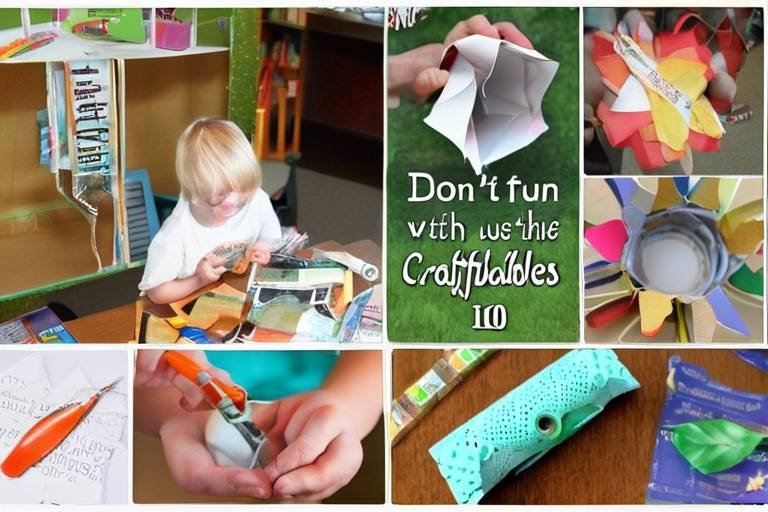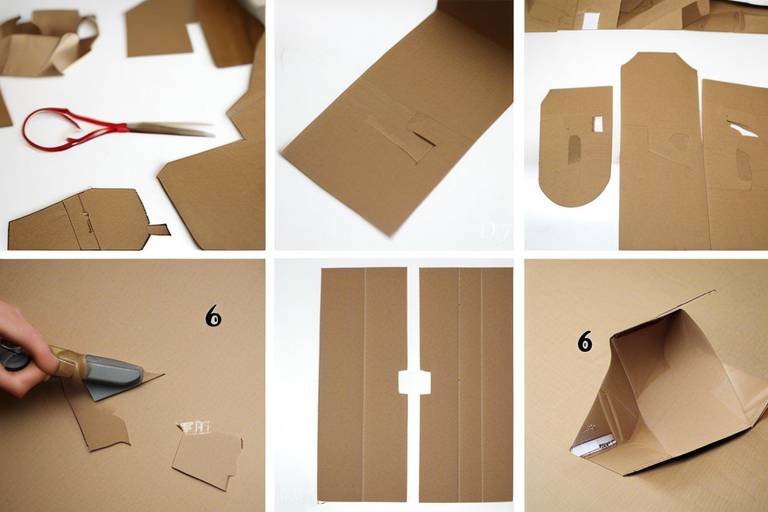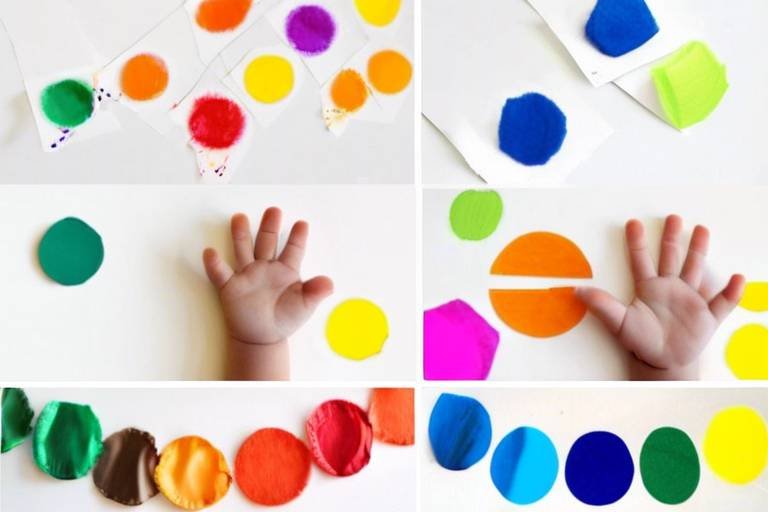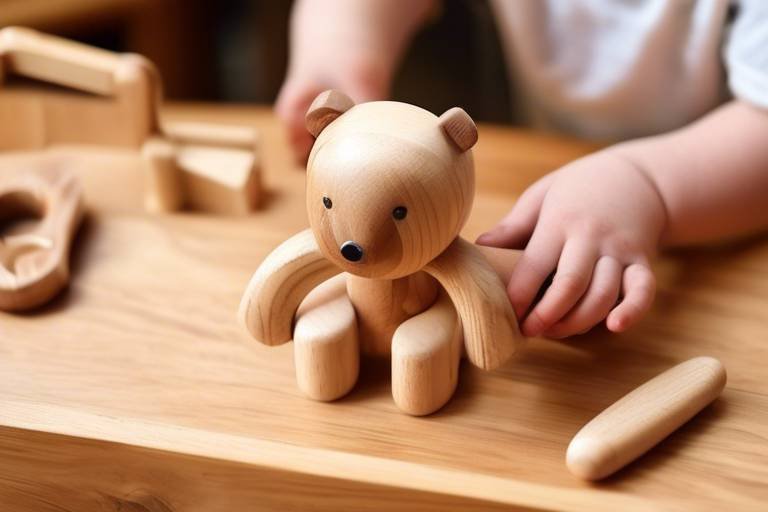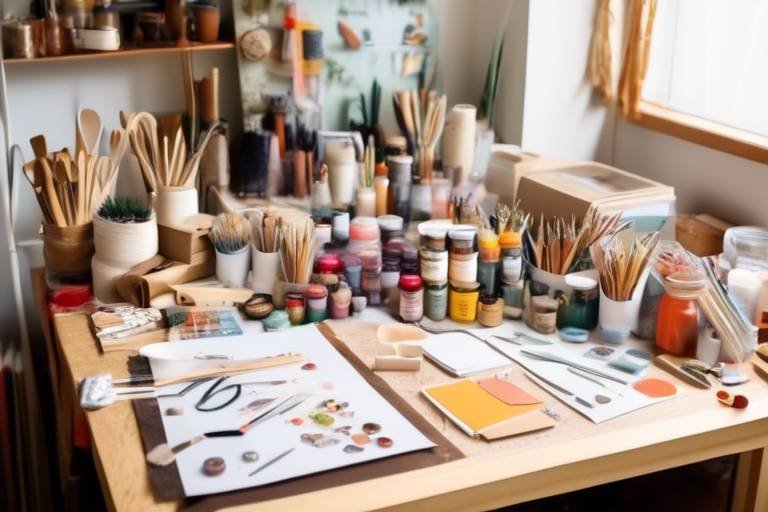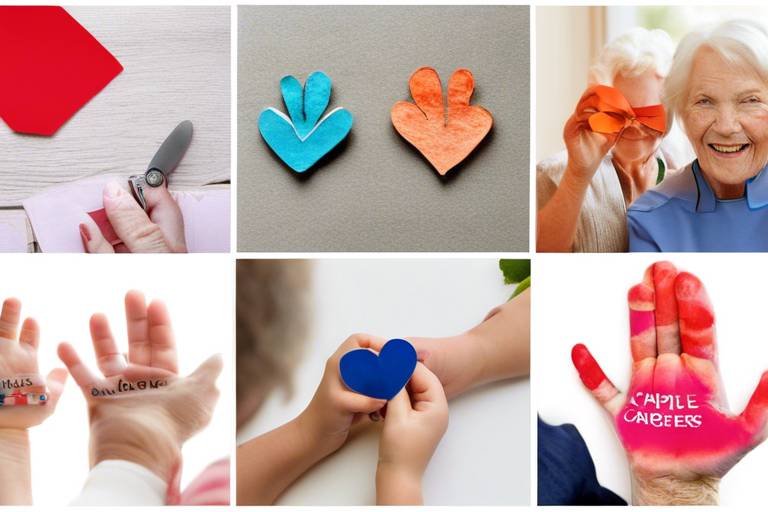How to Create a DIY Kids’ Craft Corner
Are you looking to create a fun and engaging space for your kids to explore their creativity through arts and crafts? Setting up a DIY Kids’ Craft Corner at home can be a fantastic way to encourage their imagination and keep them entertained for hours on end. Let's dive into the step-by-step process of creating a vibrant and inspiring craft corner that your little ones will love!

Choosing the Right Space
When it comes to creating a DIY kids' craft corner, one of the first and most crucial steps is choosing the right space in your home. The ideal location should be easily accessible for both you and your little ones, making it convenient to engage in creative activities without any hassle. Consider a spot with good lighting to ensure a bright and inviting atmosphere that sparks inspiration. A corner in the living room, a nook in the playroom, or even a dedicated area in their bedroom can all be great options.
Furthermore, it's essential to take into account the proximity to a water source for easy clean-up after messy art projects. Having a sink nearby can save you time and effort when it comes to tidying up, allowing for more stress-free crafting sessions. Additionally, consider the flooring in the chosen space – opting for a surface that is easy to clean and durable can make maintenance a breeze.
If you have multiple children, you may want to select a location that allows for supervision while still giving them a sense of independence. This way, you can keep an eye on their creative endeavors while giving them the freedom to explore and express themselves through art. Ultimately, the right space should be a balance of accessibility, functionality, and creativity, providing a welcoming environment for endless crafty adventures.

Organizing Supplies and Materials
When it comes to setting up a DIY craft corner for kids, organizing supplies and materials is a crucial step to ensure a smooth and enjoyable crafting experience. By having a well-organized space, children can easily access the necessary materials and unleash their creativity without any hassle. Let's dive into some tips on how to effectively organize supplies and materials for your kids' craft corner.
One of the key aspects of organizing supplies is to sort them into categories based on their type and usage. Consider creating designated storage areas for different items such as paper, markers, paints, glue, and other crafting essentials. This will not only make it easier to find what you need but also help in maintaining a clutter-free environment.
Utilizing storage solutions such as bins, shelves, and containers can greatly aid in keeping supplies neatly organized and easily accessible. Clear containers or labeled bins can be a great way to store smaller items like beads, buttons, or stickers, ensuring that everything has its place and is within reach when needed.
Another effective way to organize supplies is to create a crafting station with designated areas for specific materials. For example, you can have a section for drawing supplies, another for painting materials, and a separate area for crafting tools. This not only streamlines the crafting process but also teaches kids the importance of organization and tidiness.
Consider setting up a crafting cart or caddy that can be easily moved around the craft corner, allowing kids to have all their supplies within arm's reach. This portable storage solution can be a convenient way to keep materials organized while also promoting independence and creativity in children.
Remember, the key to a successful DIY kids' craft corner lies in effective organization and accessibility of supplies and materials. By implementing these tips and tricks, you can create a well-structured and inspiring space where children can let their imagination run wild and enjoy hours of creative fun.

Storage Solutions
When creating a DIY kids' craft corner, one of the key elements to consider is storage solutions. Efficient organization of art supplies and materials is essential for maintaining a tidy and functional craft area. By utilizing various storage options, you can keep everything in its place and easily accessible for your little ones' creative endeavors.
One effective storage solution is the use of clear bins or containers. Transparent containers allow you to see the contents at a glance, making it easier to locate specific items without rummaging through multiple boxes. Additionally, labeling each bin can further enhance organization and help children learn where each item belongs.
Shelves are another great way to store art supplies in a visually appealing manner. Installing floating shelves on the walls can create a decorative display while keeping supplies within reach. You can categorize items on different shelves based on type or color, making it convenient for kids to find what they need.
For smaller items like beads, buttons, or stickers, consider using compartmentalized storage containers. These containers have multiple sections that allow you to sort and separate tiny pieces, preventing them from getting mixed up and lost. This type of storage is ideal for maintaining order in the craft corner and preventing clutter.
Lastly, incorporating a mobile storage cart can add versatility to your craft corner. A rolling cart with drawers or baskets can hold frequently used supplies and be easily moved around the room as needed. This flexibility enables you to adapt the workspace to different projects or activities, ensuring a dynamic and organized crafting environment.

Craft Table and Seating
This article provides step-by-step guidance on setting up a DIY craft corner for kids at home, encouraging creativity and fun activities.
When it comes to creating a craft corner for kids, selecting the right craft table and seating is crucial. The craft table should be sturdy and spacious enough to accommodate various art projects. Consider a table with rounded edges for safety and easy cleaning. Additionally, opt for child-sized chairs that are comfortable and supportive to ensure long crafting sessions are enjoyable.
If you have multiple children using the craft corner, a larger table with multiple seating options may be ideal to promote collaboration and creativity. Including storage compartments within the table can also help keep supplies organized and within reach, minimizing disruptions during crafting sessions.
Furthermore, consider the height of the craft table and chairs to provide a comfortable working environment for children of different ages. Adjustable tables and chairs can cater to varying heights and preferences, allowing kids to focus on their creative projects without discomfort.
To add a touch of fun and personalization, consider decorating the craft table and chairs with vibrant colors, patterns, or stickers that resonate with your child's interests. This can make the craft corner more inviting and inspiring, encouraging kids to unleash their creativity in a welcoming space.
Remember, the craft table and seating are central elements of the craft corner, shaping the overall experience for young artists. By choosing the right table and seating options, you can create a functional and engaging space that sparks imagination and artistic expression.
1. How can I involve my child in selecting the craft table and seating for the craft corner?
2. What are some creative ways to personalize the craft table and chairs?
3. Are there any safety considerations to keep in mind when choosing craft furniture for kids?
4. How can I ensure the craft table is durable and suitable for various art projects?

DIY Decor and Personalization
When it comes to creating a DIY kids' craft corner, adding personal touches and decorations can truly elevate the space and make it more appealing to young crafters. play a significant role in making the craft corner unique and inspiring for kids. By incorporating elements that reflect their interests and personalities, you can create a space that sparks their creativity and imagination.
One fun idea for personalizing the craft corner is to involve your children in the decoration process. Let them choose colors, patterns, and themes that resonate with them, allowing them to feel a sense of ownership over the space. You can create custom artwork together, such as handprint paintings or paper garlands, to adorn the walls and add a personal touch to the area.
Another way to add personality to the craft corner is by displaying their finished projects prominently. Consider setting up a designated gallery wall where they can showcase their artwork or create a rotating display using clipboards or wire grids. This not only showcases their creativity but also instills a sense of pride and accomplishment in their work.
Don't forget the power of functional decor as well. Incorporate storage solutions that are both practical and visually appealing, such as colorful bins or transparent containers. This not only keeps the space organized but also adds a pop of color and fun to the craft corner.
For an extra touch of personalization, consider customizing their craft supplies. You can label storage containers with their names or initials, create personalized aprons or smocks for messy activities, or even decorate their craft table with stickers or washi tape. These small details can make a big difference in making the craft corner feel like their own creative sanctuary.

Creative Display Ideas
This article provides step-by-step guidance on setting up a DIY craft corner for kids at home, encouraging creativity and fun activities.
Selecting a suitable area in your home for the craft corner to ensure easy access and minimal mess.
Tips on sorting and storing various art supplies and materials for easy access and a clutter-free space.
Exploring different storage options like bins, shelves, and containers to keep supplies organized and within reach.
Ideas for selecting a child-friendly table and comfortable seating to create a functional and inviting craft area.
Suggestions for adding personal touches and decorations to make the craft corner unique and appealing to kids.
Innovative ways to showcase children's artwork and crafts, fostering a sense of pride and accomplishment.
Strategies for keeping the craft corner engaging by introducing new activities and themes to spark creativity.
The importance of parental participation and encouragement in nurturing children's artistic skills and fostering a love for crafting.
When it comes to displaying your child's artistic creations, the possibilities are endless. One creative idea is to dedicate a special wall in the craft corner as an art gallery, using colorful frames or clips to showcase their work. You can also create a rotating gallery by hanging a clothesline and using clothespins to display different pieces of artwork. Another fun idea is to repurpose an old ladder as a display shelf, allowing your child to arrange their creations in a unique way. By incorporating these creative display ideas, you can celebrate your child's creativity and encourage them to continue exploring their artistic talents.
Stay tuned for some common questions and answers about setting up a DIY kids' craft corner!

Rotating Activities and Themes
When it comes to keeping a DIY kids' craft corner exciting and engaging, rotating activities and themes play a crucial role. By introducing new projects and themes regularly, you can spark fresh creativity and maintain your child's interest in crafting. Think of it as changing the scenery in a play to keep the audience captivated.
One effective way to implement rotating activities is to plan themed crafting sessions. For example, you could dedicate a week to exploring outer space crafts, followed by a week focused on underwater adventures. This approach not only adds variety but also allows children to delve deeper into specific topics, fostering learning and creativity simultaneously.
Consider creating a calendar or schedule to map out upcoming activities and themes for the craft corner. By involving your child in the planning process, you can tailor the projects to their interests, making the experience more personalized and exciting. It's like curating a mini art exhibition with a new theme showcased every week.
Furthermore, rotating activities and themes provide an excellent opportunity for children to explore different artistic techniques and materials. From painting and sculpting to collage and origami, each new theme can introduce a unique set of skills and challenges, helping your child broaden their creative horizons.

Parental Involvement and Support
Parental involvement and support play a crucial role in nurturing children's artistic abilities and fostering a love for crafting. By actively participating in the DIY craft corner activities, parents can bond with their children, encourage creativity, and create lasting memories. Parents can provide guidance, assistance, and positive reinforcement, which are essential for building a child's confidence and skills in arts and crafts.
One way parents can support their children in the craft corner is by engaging in collaborative projects. Working together on a craft not only enhances the parent-child relationship but also allows for shared creativity and learning experiences. Parents can also showcase their own enthusiasm for crafting, inspiring their children to explore their artistic talents and develop a passion for creating.
Additionally, parents can help children set goals and celebrate their achievements in the craft corner. By acknowledging and praising their efforts, parents boost their children's self-esteem and motivation to continue exploring different art techniques and projects. Encouraging a positive attitude towards mistakes and experimentation fosters a growth mindset in children, promoting resilience and innovation in their creative pursuits.
Furthermore, parental involvement in the craft corner extends beyond crafting activities. Parents can incorporate educational elements into the projects, such as teaching children about different art styles, techniques, and artists. This not only enhances children's artistic knowledge but also broadens their understanding and appreciation of the arts.
Creating a supportive and encouraging environment in the DIY craft corner empowers children to express themselves creatively, explore their imagination, and develop valuable skills that extend beyond the artistic realm. Parental involvement and support serve as the foundation for a nurturing and inspiring space where children can thrive and unleash their creative potential.
Frequently Asked Questions
- Can I set up a DIY craft corner in a small space?
Yes, you can create a craft corner in even the smallest of spaces by utilizing vertical storage solutions like wall shelves and compact storage containers.
- How can I involve my child in organizing the craft supplies?
Engage your child in sorting and categorizing art materials based on colors, types, or sizes, making it a fun and educational activity for them.
- What are some creative ways to display my child's artwork?
You can use a gallery wall with clipboards, a clothesline with clips, or even a dedicated art frame that can be easily updated with new creations.
- How often should I change the craft activities and themes in the corner?
It's beneficial to switch up the activities and themes regularly to keep the space fresh and exciting for your child, promoting continuous creativity and exploration.
- Why is parental involvement important in a DIY craft corner?
Parental participation not only strengthens the bond between you and your child but also provides support, encouragement, and guidance in their creative endeavors, fostering a love for crafting.



